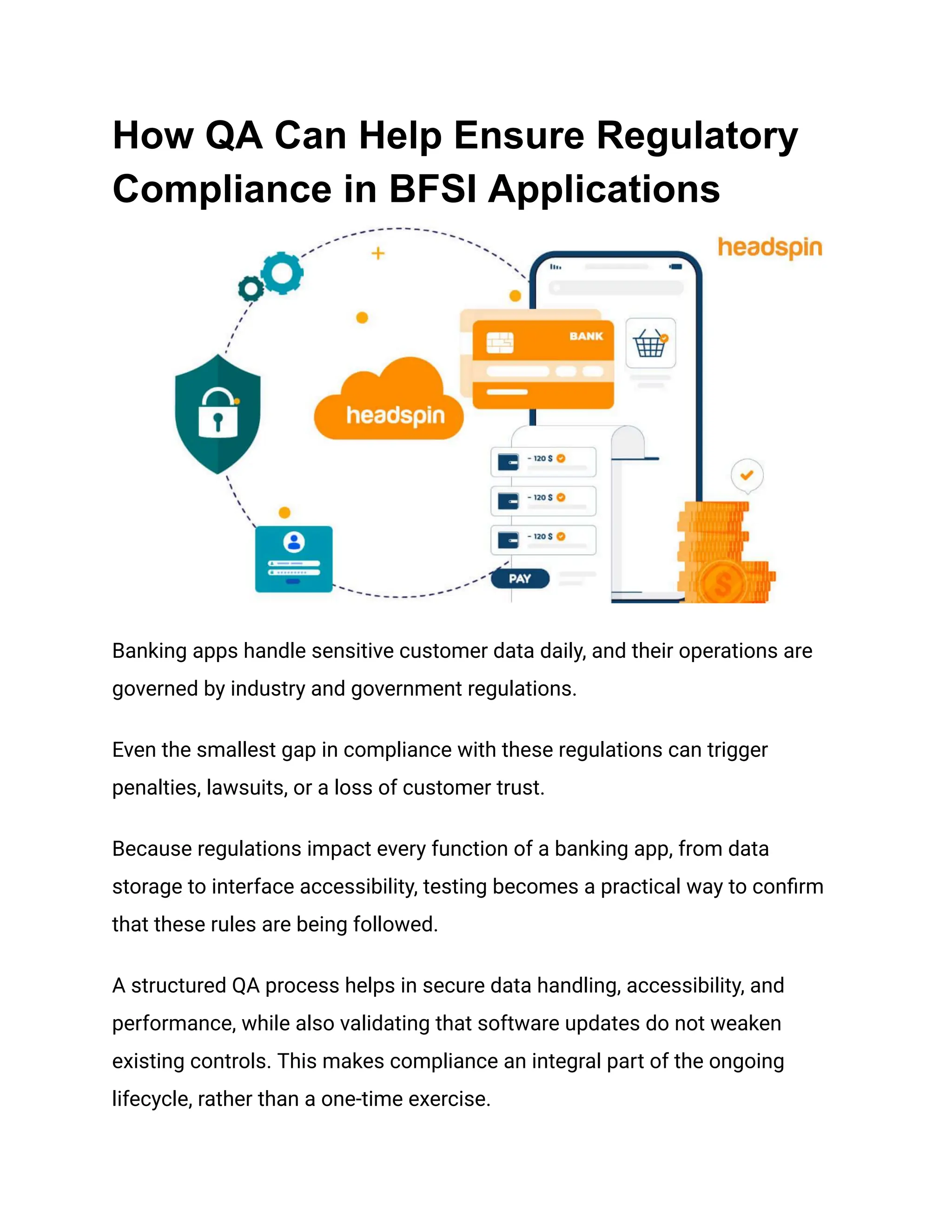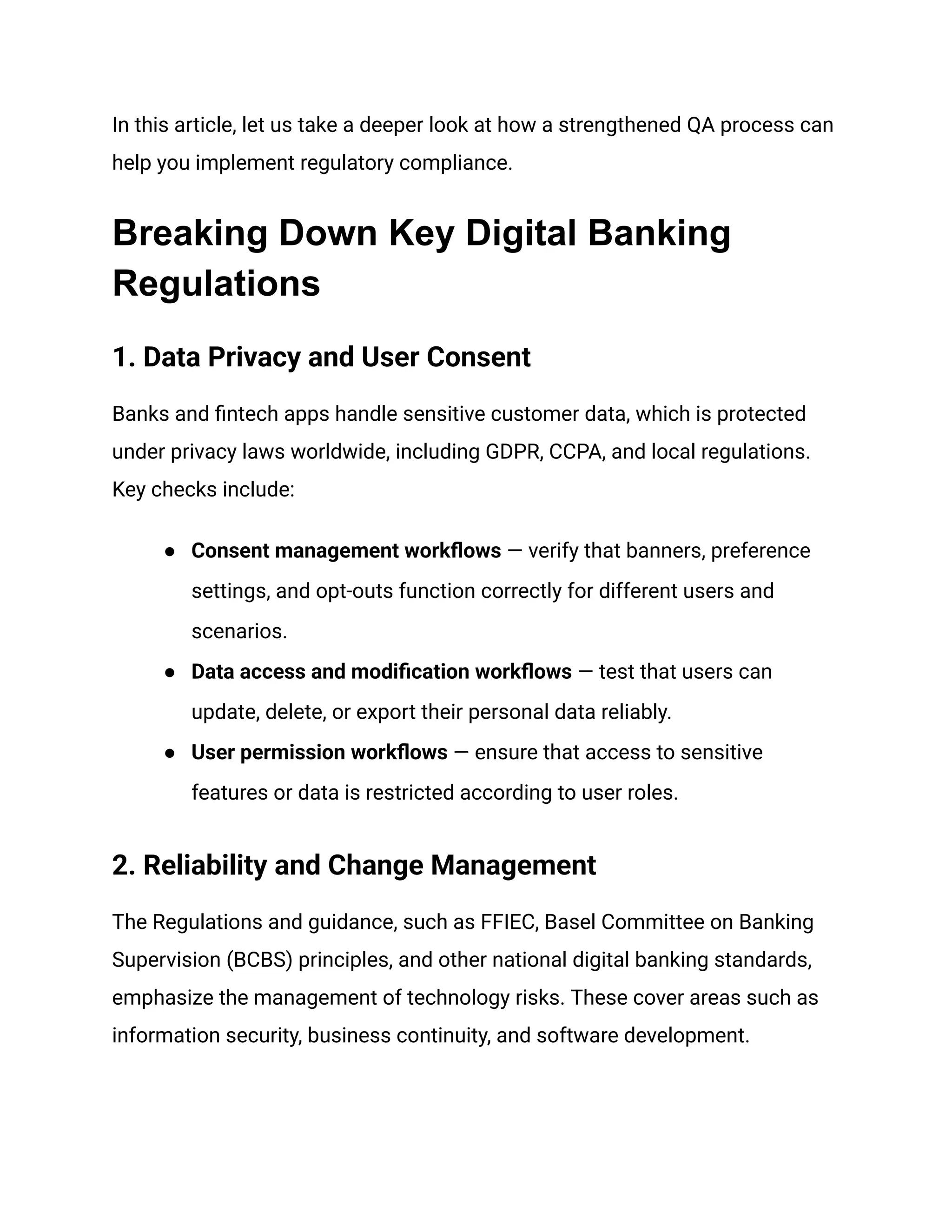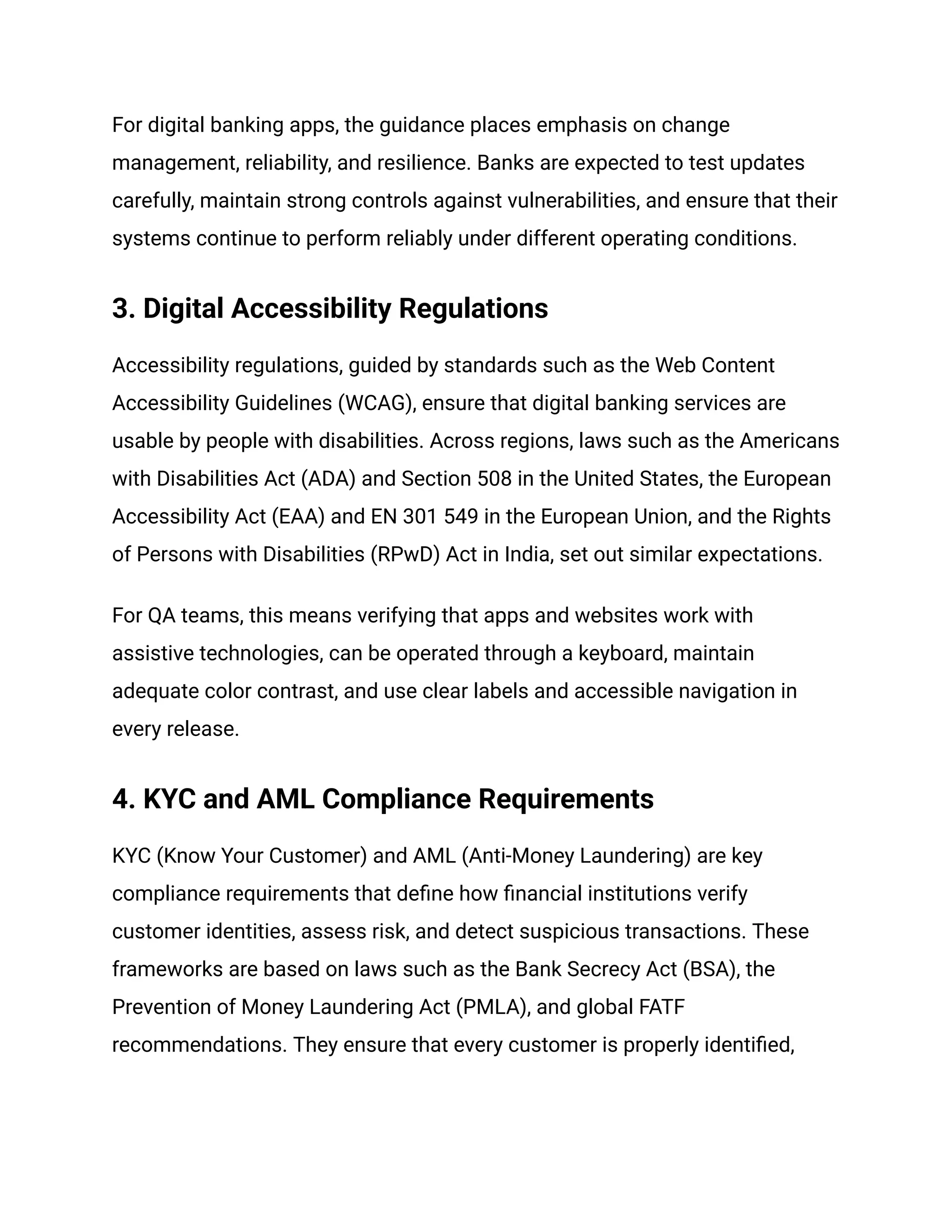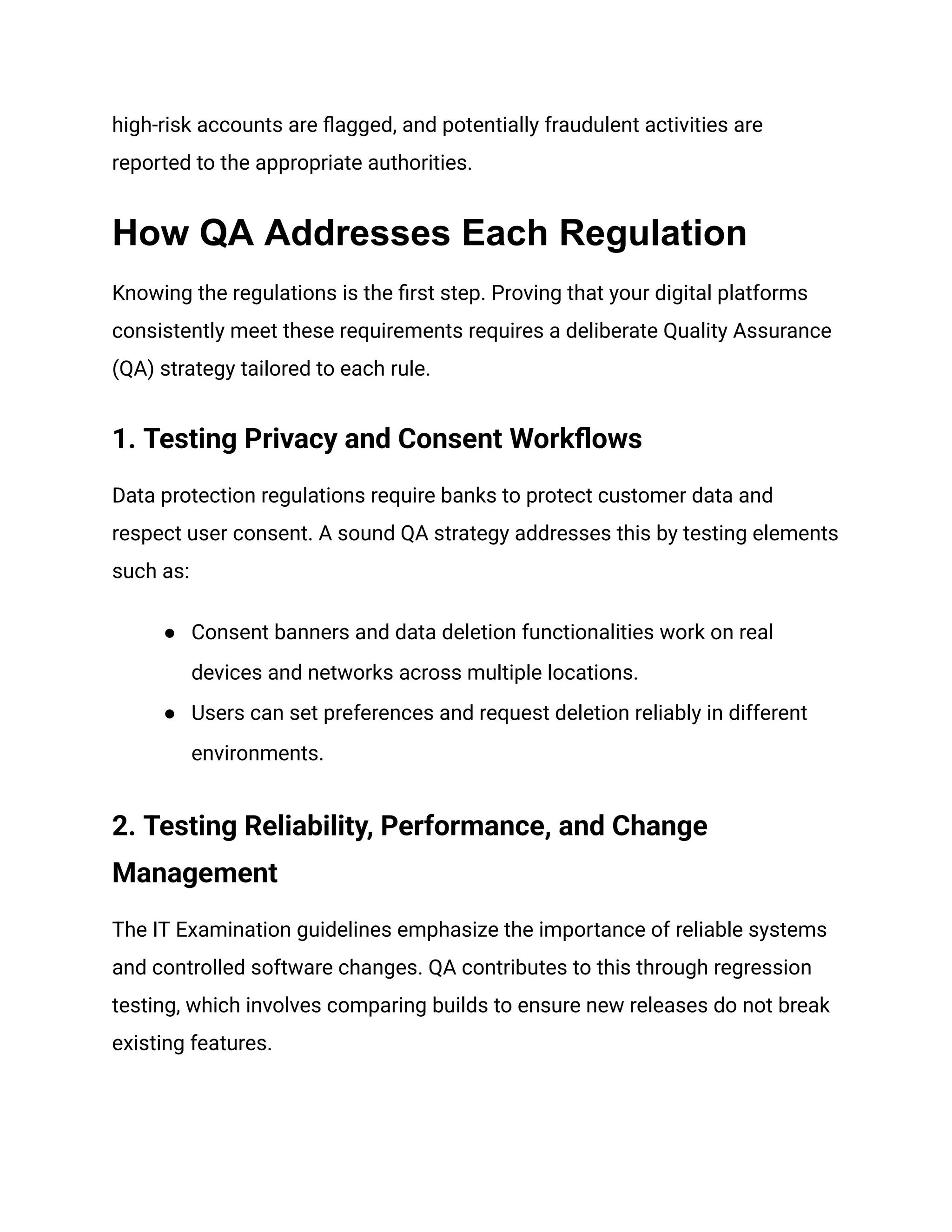Banking apps handle sensitive customer data daily, and their operations are governed by industry and government regulations.
Even the smallest gap in compliance with these regulations can trigger penalties, lawsuits, or a loss of customer trust.
Because regulations impact every function of a banking app, from data storage to interface accessibility, testing becomes a practical way to confirm that these rules are being followed.





